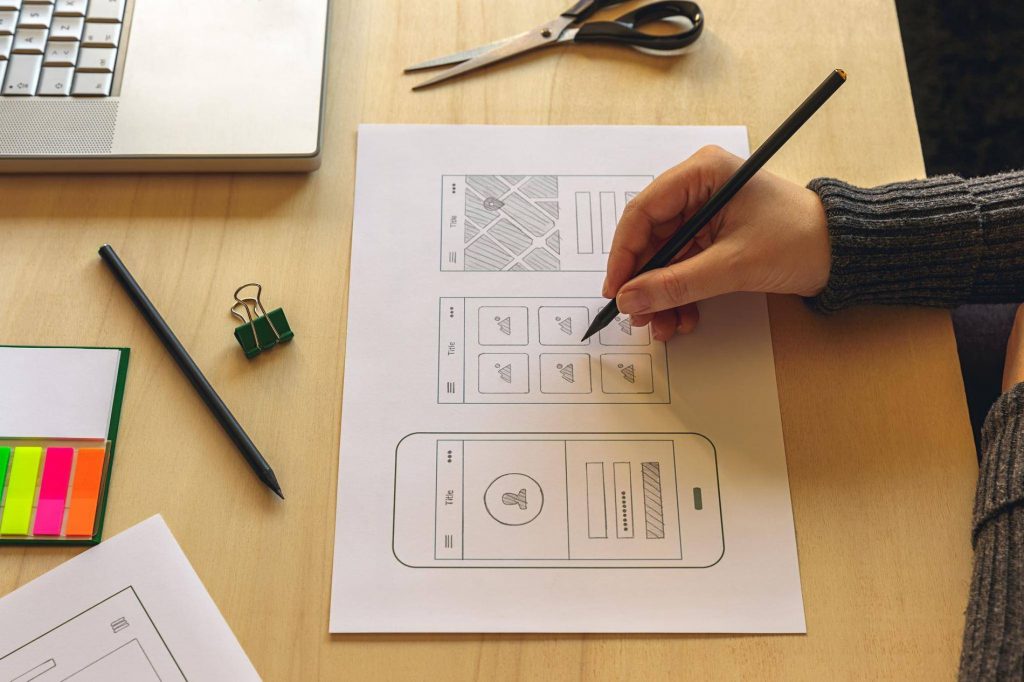Enter your email below to receive weekly updates from the Ashton College blog straight to your inbox.

Written by: Lindsay McKay
The career outlook for UX design in 2021 is extremely high, with global demand as more companies are expanding their online capabilities. And like many opportunities in the digital landscape, see cybersecurity, the demand outweighs the number of skilled professionals. The top in-demand technical skills posted on LinkedIn in 2020 were web development, UX testing, video editing, Python, SEO, and Amazon Web Services.
Many people use UI and UX interchangeably when they are two different processes. Sometimes even job postings will use the wrong job title or description, asking for a UI designer when they actually need a UX designer or something completely different like a front-end developer. Firstly, what does UX design and UI design even mean? UX means user experience, and it is a more practiced field with a broad definition that can be applied to any and all interactions between an active and potential customer and company, digital or otherwise. UI means user interface, and unlike UX, it is a strictly digital term. A user interface is the point of interaction between the user and a digital device or product, like the touchscreen on your smartphone. UI designers consider the look, feel, and interactivity of the product focusing on typography, colour scheme, and icons/buttons.
A UX designer will use extensive data research to create the wireframe, or blueprint, of the digital product to create the most efficient and easy journey for the user. Asking questions like “Is the online checkout process easy to use?” or “Does this banking app actually help you manage your money?” The UI designer will bring this journey to life through the visual aspects and touchpoints the user may encounter. Asking questions like “How can different colour combinations be used to create contrast and enhance readability?” or “What colour pairings cater to colour blindness?” Focusing on the look, accessibility, and function of the digital product.
UX design is all about identifying and solving user problems, while UI design is about creating an intuitive, aesthetically pleasing, interactive interface. While some companies may combine the roles of UX designer and UI designer, they are both crucial to creating a successful digital product and bigger companies separate the roles.
Ashton College’s UX Design Certificate Program is one of the few programs that teach both the UX process of user research to create an effective project strategy and the UI design process of creating a proper user interface. Our UX design course teaches students to successfully:
All students will leave this course with a career-ready UX design portfolio ready to start their careers in UX or UI design. To learn more about the details of each section in the program, visit the program webpage.
Students who complete the UX design course at Ashton College are ready to become UX or UI designers, but here are a few more other career options to consider.
UX writers combine a deep understanding of user-centred design with a flair for copywriting. They conduct user research to understand the audience they are writing for and analyze existing product copy to identify any areas that could potentially be improved. With the insights gained from this research, they can create a UX copy strategy. This role is perfect for someone with a communications or advertising background. As UX designers are not expected to be skilled copywriters, this could put you at an advantage in the job market.
Usability analysts were only typically found in the design world, but now they are in demand in multiple industries as a method to ensure customer satisfaction and increase sales. Analysts ensure usability goals are met by identifying project objectives, conducting studies using specialized software and real users, and giving actionable insights to reach measured outcomes.
If you want to venture outside of the design world into the data-driven world of customer satisfaction, a career as a usability analyst might be an exciting option to consider.
Information architects focus on how information is organized and presented on a webpage and assess if connecting pages have created a logical navigation for the everyday user. They will apply user personas and scenarios to develop user flow models, processes, and prototypes. These findings are then used to optimize the navigational structure of the website and create the perfect journey for the user.
If you enjoy structuring information and thinking about cognitive psychology rules in practice, the information architect path may be worth considering.
The information contained in this post is considered true and accurate as of the publication date. However, the accuracy of this information may be impacted by changes in circumstances that occur after the time of publication. Ashton College assumes no liability for any error or omissions in the information contained in this post or any other post in our blo

View All Comments